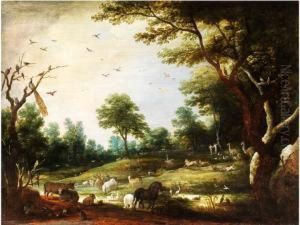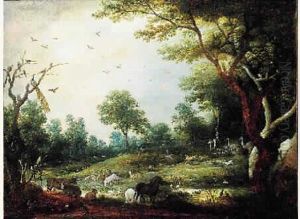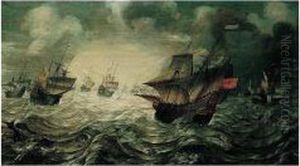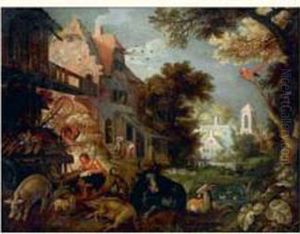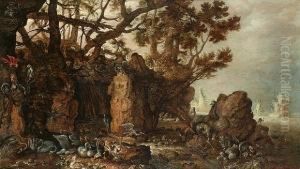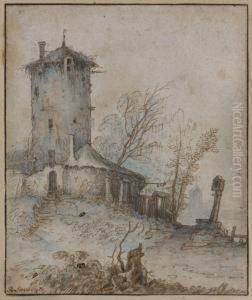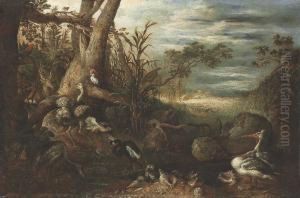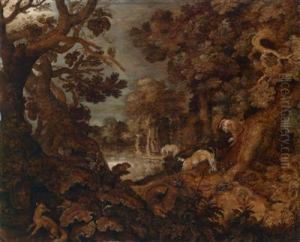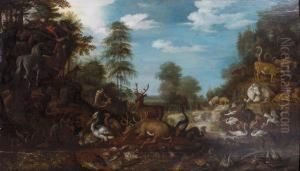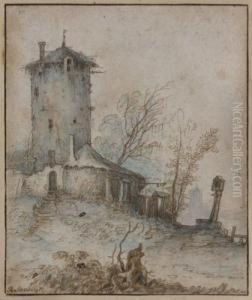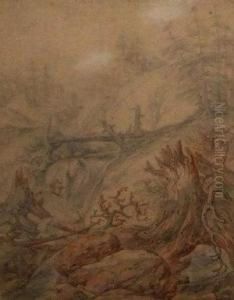Hans Savery Paintings
Hans Savery, also known as Hans Savery the Younger, was a Flemish painter, draughtsman, and engraver born in 1589 in Kortrijk, now in Belgium. He hailed from a distinguished family of artists, which notably included his uncle, Roelandt Savery, who was a significant influence on Hans's development as an artist. The Savery family moved to the Northern Netherlands in the early 17th century, fleeing the religious conflicts in the Southern Netherlands. This relocation played a crucial role in shaping Hans's career, as he became part of the vibrant Dutch artistic community, which was experiencing a golden age of painting.
Hans Savery's work was versatile, encompassing a variety of subjects including landscapes, still lifes, and genre scenes. He was particularly known for his detailed and imaginative landscapes, which often incorporated elements of the fantastical and the exotic, reflecting the era's curiosity about distant lands and unknown natural wonders. His landscapes were not just mere representations of nature but were imbued with a sense of wonder and meticulous attention to detail, characteristics that made his work popular among collectors.
Savery's artistic style was influenced by his uncle, Roelandt, as well as other contemporary Flemish and Dutch artists. He was adept at engraving, which allowed his works to reach a wider audience. Throughout his career, Hans Savery moved between different cities in the Netherlands, including Utrecht and Haarlem, where he was part of the local guilds of painters. These guilds were essential for artists at the time, providing a network of professional connections, opportunities for commissions, and participation in artistic life.
Despite his contributions to the art of the Dutch Golden Age, Hans Savery is not as well-remembered as some of his contemporaries. His death in 1654 marked the end of a career that spanned over six decades, during which he developed a distinctive style that combined the lush, detailed landscape tradition of Flanders with the burgeoning interest in naturalism and realism characteristic of Dutch art. Today, his works can be found in various museums and collections, appreciated for their beauty and historical value.
